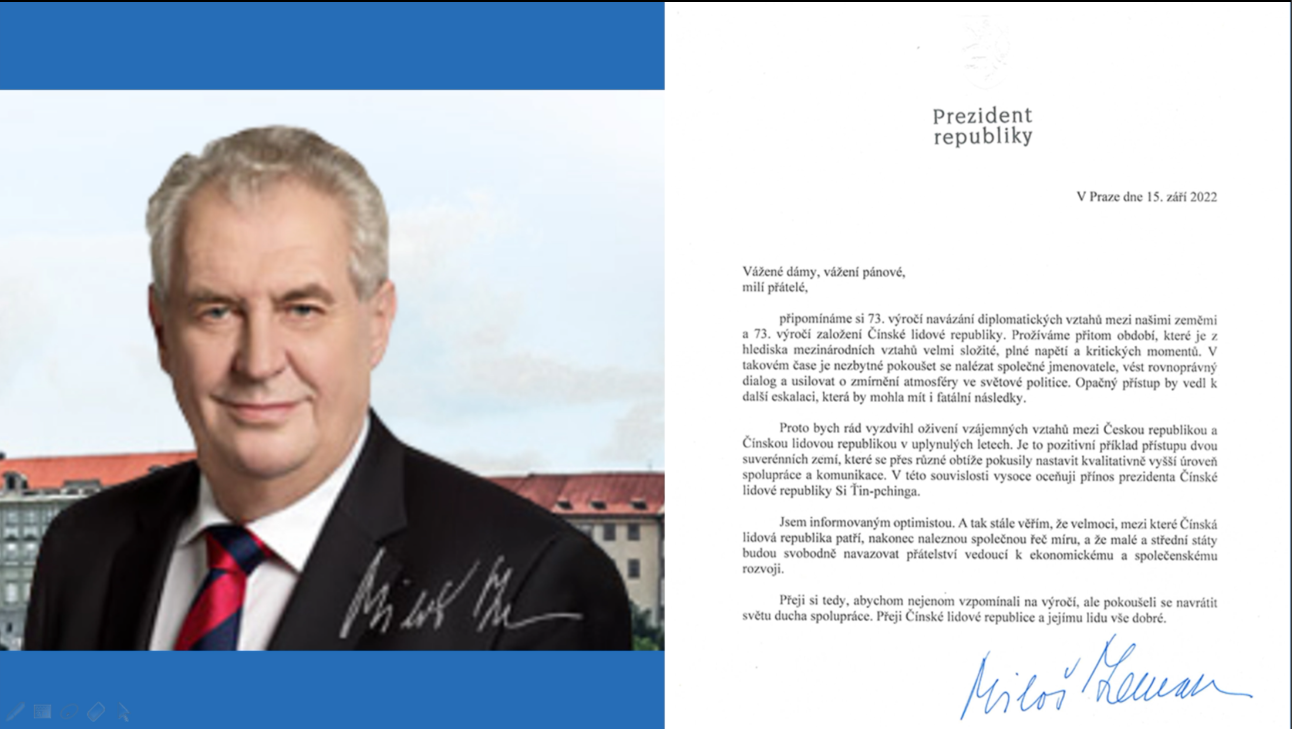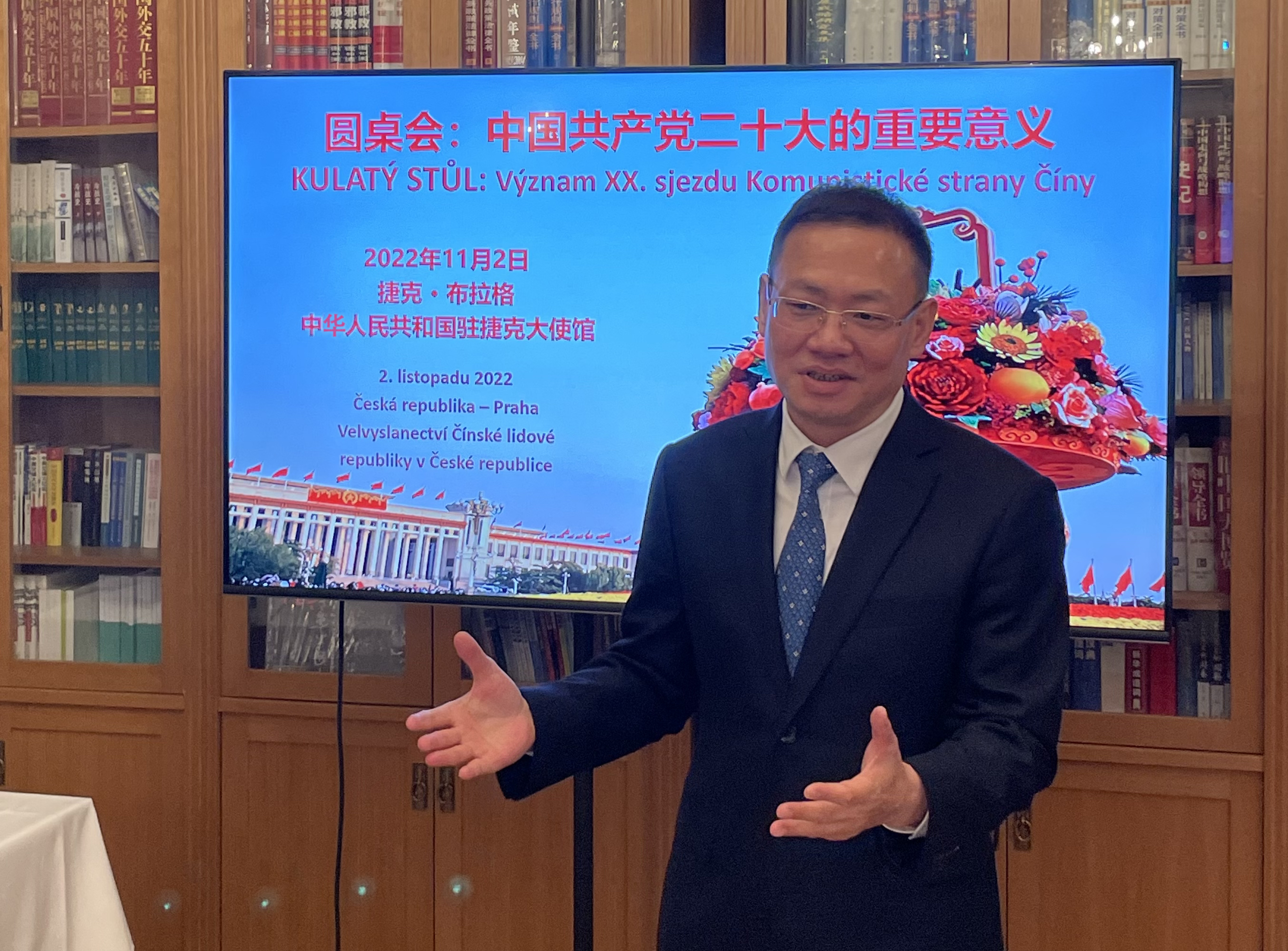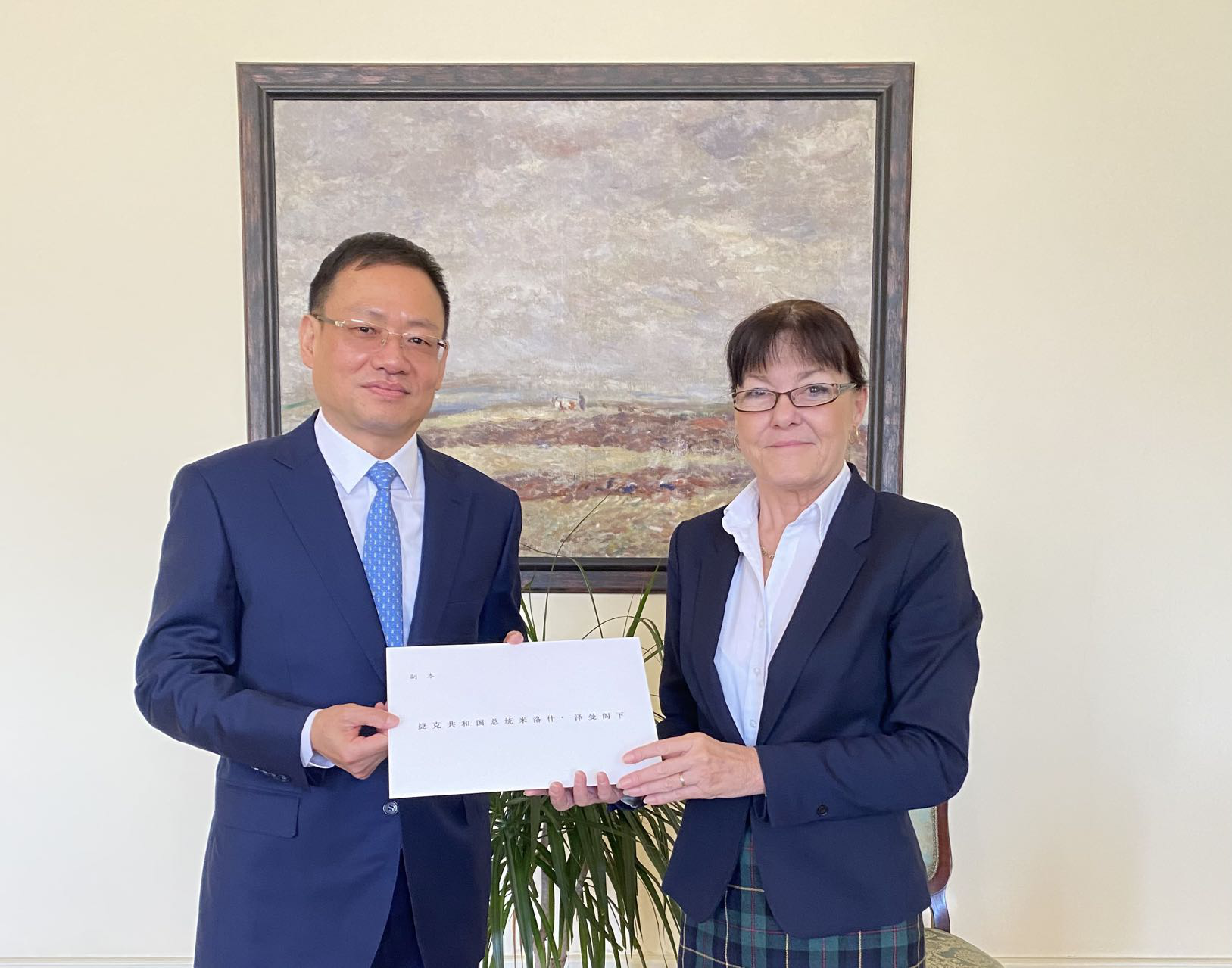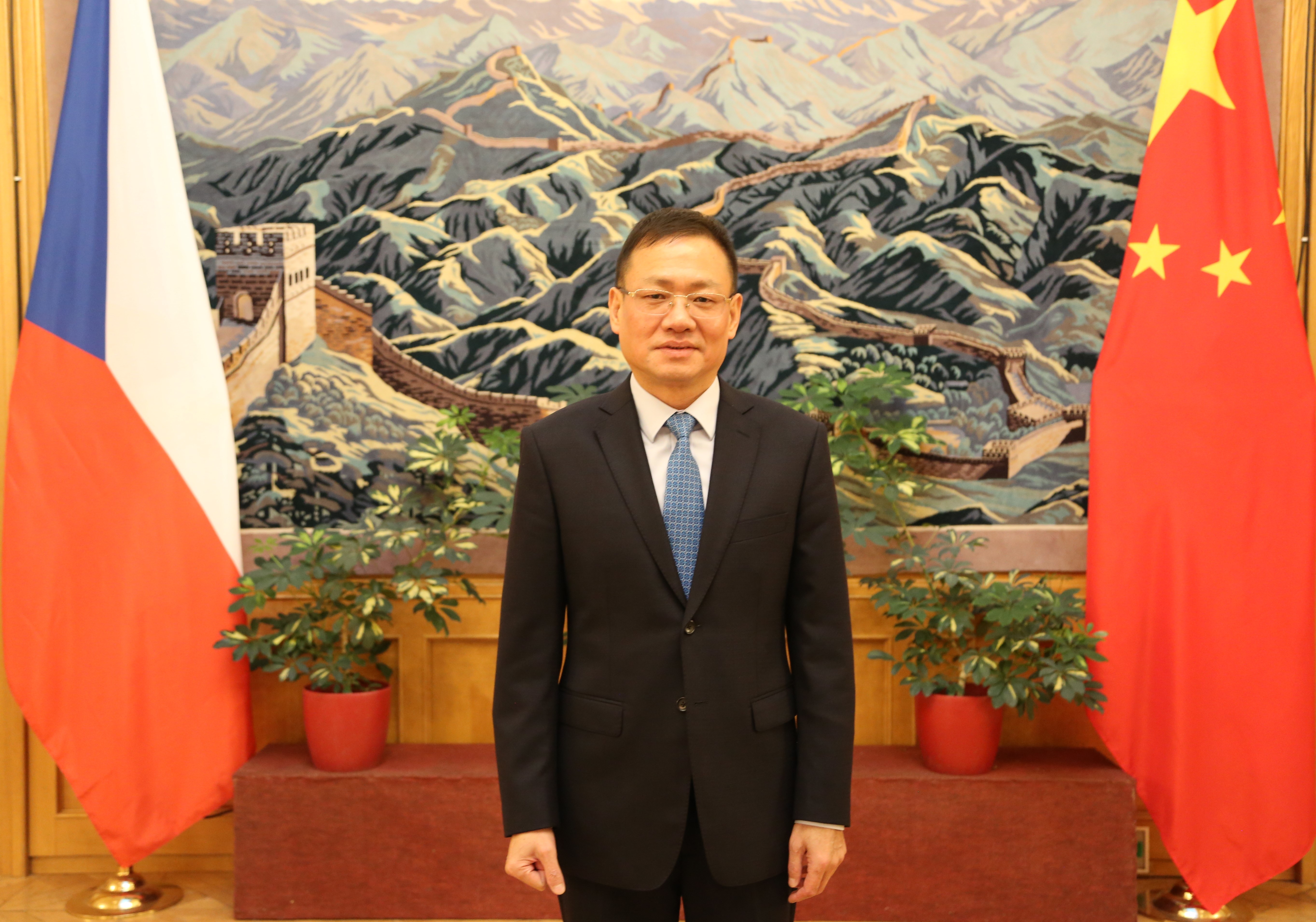| Speech by Ambassador H.E. Ma Keqing at the Dinner by Association for Foreign Investment of the Czech Republic |
| 2016-11-28 18:19 |
| Mr. Chairman Kamil Blažek, It gives me a pleasure to have a chance to address the audience of the Association for Foreign Investment and speak about China’s economy. Over the past 38 years, China has registered high-speed economic growth and has become the world’s second biggest economy and the biggest trader of goods. China has succeeded in lifting over 700 million people out of poverty, which accounted for over 70% of the global population living in poverty. On the other hand, China’s economic development has entered a new normal, a stage it cannot bypass. Given the complex and challenging international environment and deep-seated domestic problems accumulated over the years, the Chinese economy is at a crucial stage of transition from old to new growth drivers and a stage of economic transformation and upgrading. For the sake of the long-term interests and sustainable development, we took a hard decision to press ahead with structural reform. The goal is to take an energy conserving, environment friendly, green, circular and sustainable path of development. We have already made visible progress. The tertiary industry has accounted for over half of our economy, and environmental degradation was kept under control. Among the three drivers of growth, namely investment, export and consumption, consumption has become the biggest driver for the first time. Despite continued slowdown in global growth, the Chinese economy has on the whole maintained stability while making steady progress. China's GDP expanded by 6.7% in the three quarters of this year. Corporate profits in the industrial sector are steadily rising. CPI is basically stable, about 2%. In particular, the employment situation is stable. In September, the unemployment rate was less than 5 per cent. An important reason the Chinese economy has maintained steady growth is that reform, innovation, adjustment and transformation have all played an important role. Now every day in China, over 13,000 new enterprises are being created. Such increase has given a strong boost to job creation. New areas of consumption such as information and communication, smart phones and new energy vehicles are rapidly expanding. Tourism, culture, sports, health and old-age care are rapidly growing. An innovation-driven economy is full of vitality. High-tech industries, high-end manufacturing, e-commerce and other new business forms are booming. On the whole, the Chinese economy is better structured; its quality is improving and a stronger momentum is being gathered. We are also aware that downward economic pressure remains and the challenges are not to be underestimated. In the stage of transition, short-term fluctuations of economic growth are hardly avoidable. However, the Chinese economy will not head for a "hard landing". The Chinese economy has huge potential, strong advantage, broad space and bright prospect. China has a 900 million strong workforce, among whom 170 million have received higher education or training in professional skills. Every year we produce over seven million college graduates and over five million graduates from secondary vocational schools. We are No.2 in R&D input, with an input of over RMB 1 trillion last year. China is the world's second largest consumer market. Its middle-income population is in the hundreds of millions and is still expanding. In the next five years, China will import goods worth over 10 trillion US dollars. All these make China a major emerging market with the biggest growth potential. China’s economy accounts for 13 percent of the world's total, contributing around 30 percent to world economic growth. China is still an important engine for the world economy. We will deepen reform and further promote the innovation strategy. Innovation is not only about developing the new economy. It is also about transforming and upgrading traditional industries. We will implement the Made in China 2025 initiative to make manufacturing more IT-based and smarter. We will accelerate changes in models of production, management and marketing and create new industry chains, supply chains and value chains. This will make Chinese manufacturing more competitive. We will transform and upgrade the economy through opening-up. As the second largest overseas investor, China’s non-financial direct investments to 155 countries totaled 121.42 billion US dollars in 2015 and in the 3 quarters of 2016, the number was 134.2 billion US dollars, an increase of 53.7% year on year. China will open still wider to the outside. We will enhance our open economy, open wider the service sector and general manufacturing sector, provide more investment opportunities to foreign businesses and foster a fairer, more transparent and predictable investment environment. All companies registered in China, be it Chinese-funded, foreign-funded, joint ventures or independently-owned, will be treated as equals. Their legitimate rights and interests will be protected, and they will have access to better public services. Three years ago, Chinese President Xi Jinping proposed the “Belt and Road” Initiative, with the aim to share development opportunities and achieve common prosperity with relevant countries. Based on the principles of wide consultation, joint contribution and shared benefits, it promotes policy coordination, facilities connectivity, unimpeded trade, financial integration and people-to-people bonds. Since then, more than 100 countries and international organizations have joined the Initiative. China has signed cooperation agreements in advancing the “Belt and Road” Initiative with more than 30 countries, and cooperated with 20 plus countries in production capacities. With the deepening financial cooperation invigorated by the Asian Infrastructure Investment Bank and the Silk Road Fund, a number of landmark projects with significant influence have taken shape. Last three years have witnessed the bilateral trade between China and the relevant countries exceeding 1 trillion US dollars, and the direct investment from China to 49 countries along the “Belt and Road” amounting to 15 billion US dollars. We have already produced great progresses and achievements beyond expectation, and brought new opportunities for the world economy. The early harvests of the “Belt and Road” Initiative have demonstrated strong vigor and vitality. We will focus on key areas, key countries and key projects to promote the “Belt and Road” Initiative, upholding the principle of equality and mutual benefit, and to achieve even greater success. China welcomes the active participation of all countries including Europe, Central and Eastern Europe and the Czech Republic, to board the “express train” of China’s development and enjoy prosperity together. We hope all entrepreneurs present today could pay more attention to the “Belt and Road” Initiative and seize the rare opportunities to join in, and to further expand our bilateral cooperation to our mutual benefit. Situated in the heartland of Europe, the Czech Republic enjoys advantageous location, strong industrial foundation and unique strengths in machinery, automobile manufacturing and aero-industry. Chinese companies hope to cooperate with their Czech counterpart to carry out industrial capacity cooperation in the manufacturing sector, and on that basis, expand practical cooperation in such areas as finance, telecommunications, smart industry, nano and environment technology, information technology, medicine and biotechnology etc., to deliver greater fruits of this mutually beneficial cooperation to the people of our two countries. Thank you! |
|
||||||||||||||||
| ||||||||||||||||
|
|
||||||||||||||||







